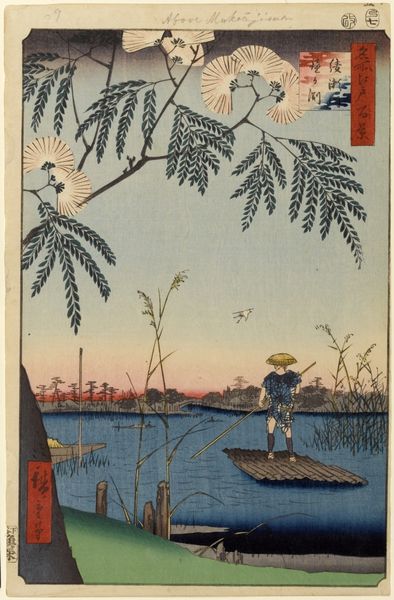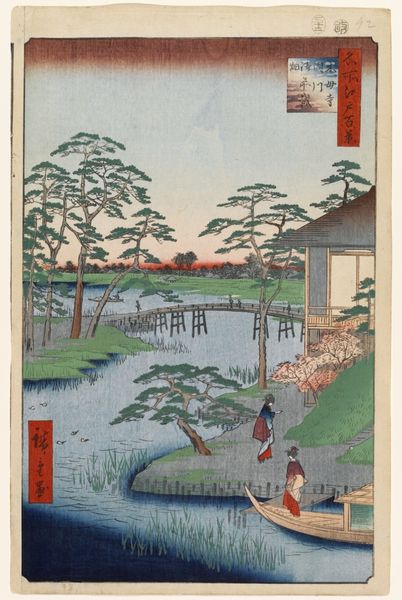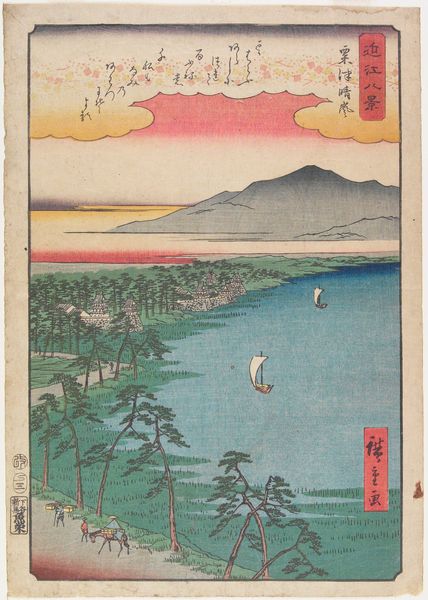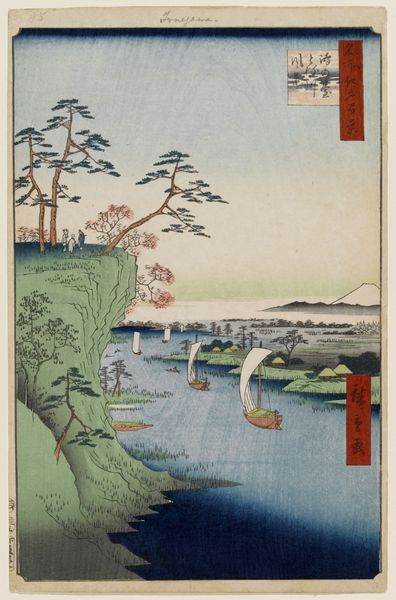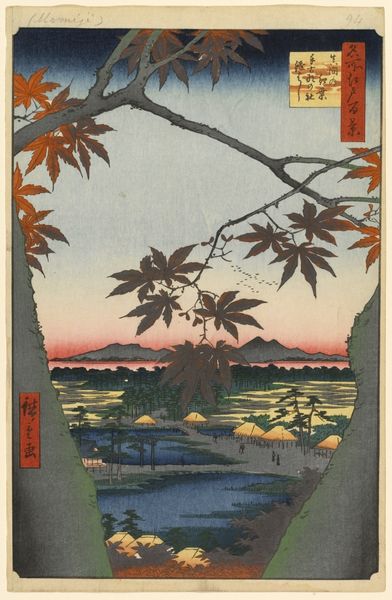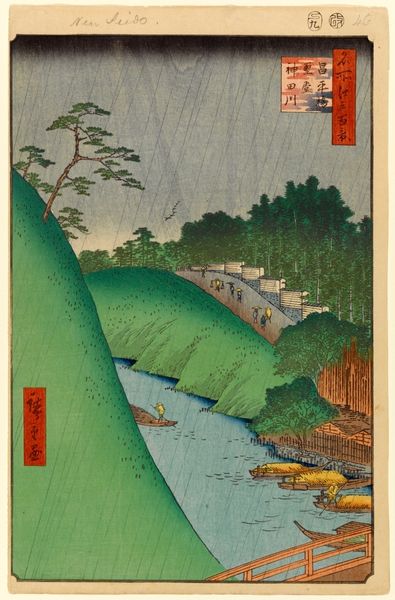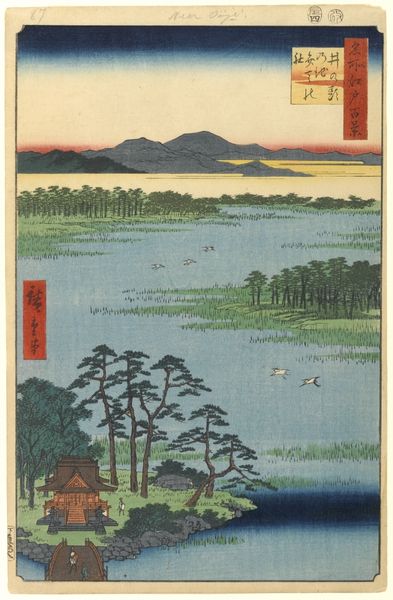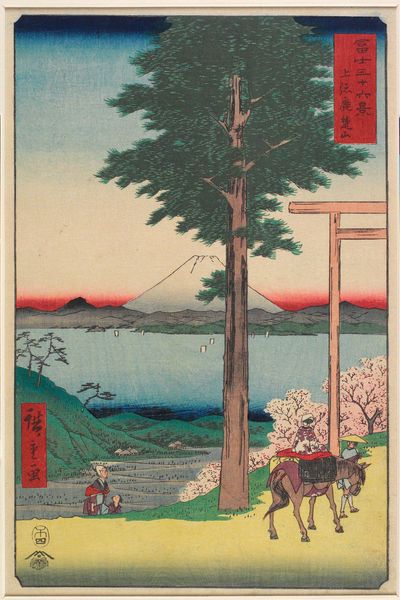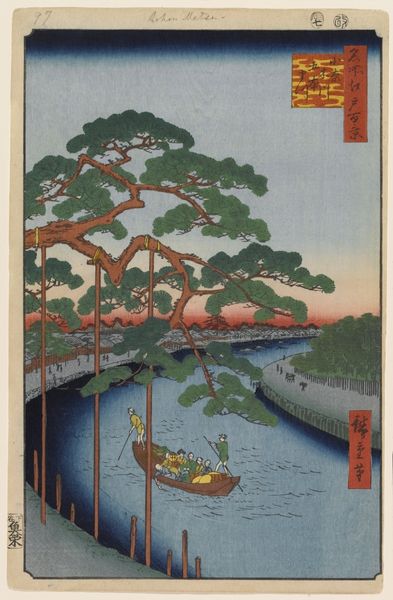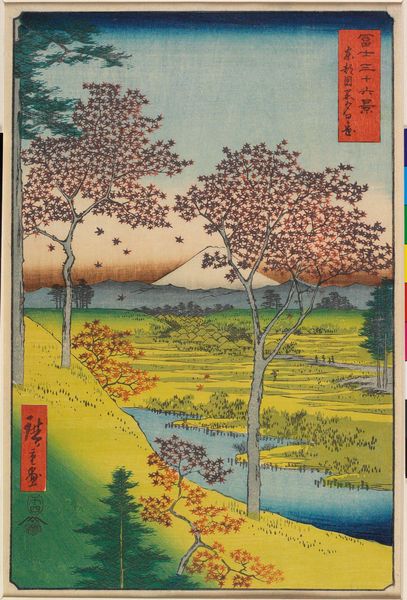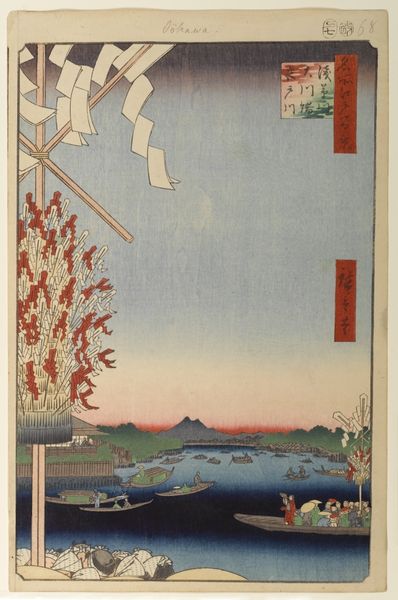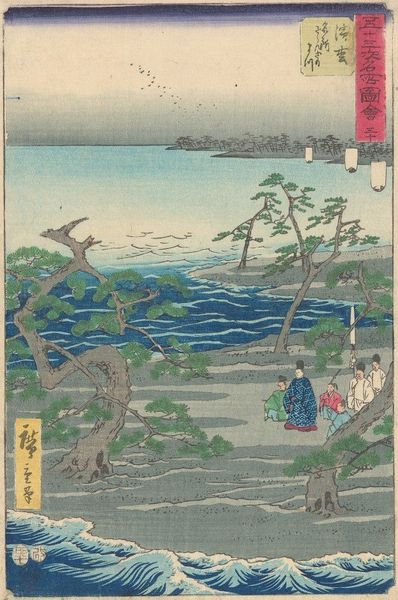
Ayase River and Kanegafuchi (Ayasegawa Kanegafuchi), from the series One Hundred Famous Views of Edo (Meisho Edo hyakkei) Possibly 1857
0:00
0:00
Dimensions: vertical oÌban: H. 35.5 cm x W. 24.9 cm (14 Ã 9 13/16 in.)
Copyright: CC0 1.0
Curator: Oh, the stillness. I feel like I can almost hear the water lapping. Editor: Yes, there’s such serenity in this print. Hiroshige, the artist, captured this scene, titled "Ayase River and Kanegafuchi," as part of his "One Hundred Famous Views of Edo." I see the work primarily as evidence of material supply chains, production methods, and labor. Curator: The artist’s focus on the natural world resonates so deeply with me. The viewer's positioned on the riverbank with the reeds, looking out as a solitary figure poles their raft through the waters. It’s as if we, too, are experiencing the quietude of the river. Editor: Note the use of woodblocks. It's likely that artisans used cherry wood because it’s fine-grained and holds detail well. And that man, poling his raft. Wood was used to construct the raft, and bamboo to weave the hat. Curator: Absolutely, there’s a palpable intimacy with the figure. Hiroshige offers us a glimpse into the subtle beauty of everyday life. A single bird in flight, with pale pink blossoms hanging above. It's dreamlike. Editor: Yes, the woodblock production allowed for the mass distribution of these dreamlike images. It makes one wonder about the environmental impact of the timber industry, and the labor involved in cutting down those trees. Curator: Well, I feel a sense of peace. Editor: I'm left thinking about the economics of art in the 19th century.
Comments
No comments
Be the first to comment and join the conversation on the ultimate creative platform.
